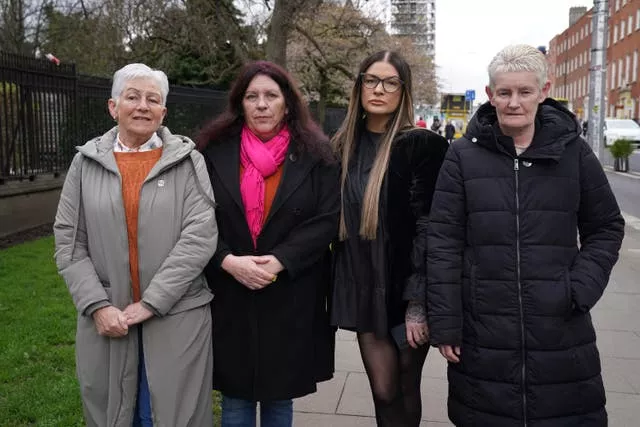The jury in the Stardust inquest has been given details of the five verdicts it may return over the deaths of 48 people in a fire in Dublin in 1981.
Coroner Dr Myra Cullinane outlined the law that applies to the jury’s deliberations involved in each of the verdicts and what the jury should consider in coming to its decision.
Dr Cullinane also told the jurors she is “so grateful” for their dedication to the inquest and for their attention in the almost year-long inquiry, which is being held at Dublin District Coroner’s Court on the grounds of the Rotunda Hospital.

The inquest into the deaths began in April last year and has heard evidence from 373 people.
The fire in Artane in north Dublin broke out in the early hours of Valentine’s Day in 1981.
The new inquest, which is the longest ever held in Ireland, is coming to an end following months of evidence.
Dr Cullinane said the jury may consider returning one of the following verdicts following the conclusion of all evidence: accidental death, death by misadventure, unlawful killing, open verdict or a narrative verdict.
She said that an accidental death verdict may be returned where a sudden or unanticipated occurrence leads to a death.
Dr Cullinane said that something could happen suddenly and without warning which leads to a death.
The coroner gave an example that this could be where a person falls off their bicycle during the course of a routine journey and sustains fatal injuries.
“Therefore, if you decide in your findings in relation to the fire that occurred at the Stardust in 1981 and the consequent 48 deaths can be characterised or described as an accident in that way, then you may return this verdict,” she added.
The legal test for accidental death is on the balance of probabilities.
Death by misadventure, Dr Cullinane explained, is where something has happened which appears to be an accident and leads to a death, however there is an additional feature of a risk that has contributed in a significant way to the death.
“If you were to decide that the fire that broke out at the Stardust broke out accidentally, but there were risk factors present which caused or contributed to the deaths in a significant way, whether because such factors contributed to the fire starting or to fire spreading, or by creating other risks, then you may record the verdict of death by misadventure,” she added.
The coroner reminded the jurors that they must not attribute any blame to anyone for the risks that may have been present.
“You should apply the standards of 1981 in deciding on the extent of any failures that arose and not the standards of today,” she added.
“You should bear in mind the circumstances that persons were facing at the time when they made the decisions that they made. You should be careful not to make judgments based on hindsight.”
Turning to the verdict of unlawful killing, Dr Cullinane said this finding is for situations of the “most serious kind”.
She told the jurors that they must carefully consider the legal rules and whether they are entitled to make a finding of unlawful killing.
Dr Cullinane reminded jurors that they must not identify anyone, either directly or indirectly, in their findings.
“This prohibition is most clearly relevant to the verdict of unlawful killing,” she added.
“This is because unlawful killing is a verdict that clearly and unambiguously expresses a view of the circumstances of the death, which means that you formed a view, if it’s returned, that the law has been broken in a serious fashion.
“In other words, the verdict itself makes it clear that the law has been broken. In this regard, the verdict of unlawful killing is markedly different from the other verdicts.”

Dr Cullinane added: “So the verdict of unlawful killing in a coroner’s inquest is reserved for situations of the most serious kind, such as murder, infanticide, or manslaughter.
“The kinds of death that will lead to a verdict of unlawful killing is one that fulfils the criterion of something altogether more serious than the other types of deaths that I’ve referred to.”
Explaining the test the jurors must apply, the coroner said: “For this particular verdict, there is a very specific test which you must apply before you can return that verdict.
“You must find firstly that there has been a failure by a person or persons to a very high degree to observe such a course of action as experience shows to be necessary, if substantial injury to others is to be avoided.
“And that such failure was a substantial cause of the death.
“You must understand that the failure can be no ordinary failure. You must also bear in mind that in cases where the verdict of unlawful killing is returned, the facts are exceptionally grave.
“This includes scenarios where the facts of the inquest overlap with those that might be associated with murder, infanticide, and manslaughter cases in a criminal court, including what is known as gross negligence manslaughter.
“This verdict is only available in a subset of such deaths that have occurred in the most serious of circumstances.”
The test to be applied is beyond all reasonable doubt.
The jury may also consider an open verdict or narrative verdict as part of its findings.







